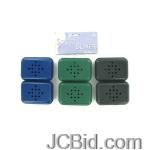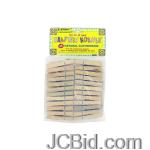
| Updated Blogs |
|
Computer Support Blog
Essensial Software for Web Based Support
HP Server and Desktop
HP ILO - Remote Tech-Support Software
More .....
|
 RSS Feed | Login
RSS Feed | Login Ecomass High Density Engineered Thermoplastics
Ecomass Technologies is a company that is located in 4101 Parkstone Heights Dr, tx Travis, TX Austin, TX. This business is categoried in holding and other investment offices, patent owners and lessors.
Types of Radiation Shielding Materials
By Steven J. Stanek at 2016-02-03 03:12:43
Traditionally, radiation shielding materials have for the most part been manufactured using lead. From industrial and nuclear shielding to radiation therapy, lead found its way into most spheres of shielding simply because its attenuating qualities made it the ‘material of choice’ when it came to radiation protection. However, lead poses all kinds of health risks, and severe cases of lead poisoning have also resulted in death. It seems particularly counterintuitive to introduce the use of lead, a known toxic material, in use at hospitals and for medical treatment, where one goes to receive health benefits and not to be exposed to further health risks. Given our increasing sensitivity towards the dangers of lead,there is a growing demand for lead free shielding materials and we have several options to choose from when it comes to choosing radiation shielding equipment.
Lead Shielding
Lead (atomic number 82, symbol Pb) is a malleable, soft and corrosion-resistant metal that comes with a high density and is incredibly useful in terms of x-ray shielding and gamma-ray shielding. In order to transform lead into a shielding material, it is mixed with additives and binders. This converts lead into a flexible vinyl sheet which is layered to achieve the desired thickness and incorporated into different types of radiation shielding equipment. The most common levels of lead protection include 0.25mm, 0.35mm and 0.
Lead Composites
Lead composites, or lead composite shielding, refers to a mixture of lightweight metals and lead. This proprietary mixture varies from one manufacturer to the other, but you can always expect non-toxic high density materials such as tin, PVC vinyl and rubber to find their way into the blend. The biggest advantage of using a lead composite is that it is up to 25% lighter when compared to regular lead shielding materials, despite offering the same protection against radiation. However, they still pose the same health risks as lead.
Lead Free Shielding
The third and most important type is lead-free shielding, which is produced from a blend of composite materials that eliminate the need for lead entirely without compromising on radiation protection. Leadfree shielding materials are created by mixing heavy metals such as bismuth, antimony, tin and tungsten, metals with polymers. The biggest advantage that these materials have to offer is that they are entirely recyclable and unlike lead or lead composites, they don’t pose any health hazards.
Choosing Between the Three
Each of these core shielding materials has its own features and benefits. There might be a number of factors such as the frequency and length of the procedure worth considering when making your decision, but you always feel safer choosing a lead free shielding alternative. After all, choosing a material which has its own health hazards to protect you from the health hazards of radiation does sound counter intuitive!
So Can I Really Breathe Free?
Despite posing all kinds of health risks, radiation is commonly used in several radiologic applications not only for diagnostics, but also for treating patients through advanced treatments. Modern-day applications are able to deal with radiation better, and this is largely due to the advent of radiation shielding materials. While these materials have literally transformed the field of medicine and helped in saving countless lives, the use of radiation isn’t entirely free from risks. Those dealing with radiation must understand how to protect the human body from radiation and also receive the right training in preventing injuries to ensure patient safety.
Permalink | Comments (0)
Comments
To add a comment please login by clicking here






